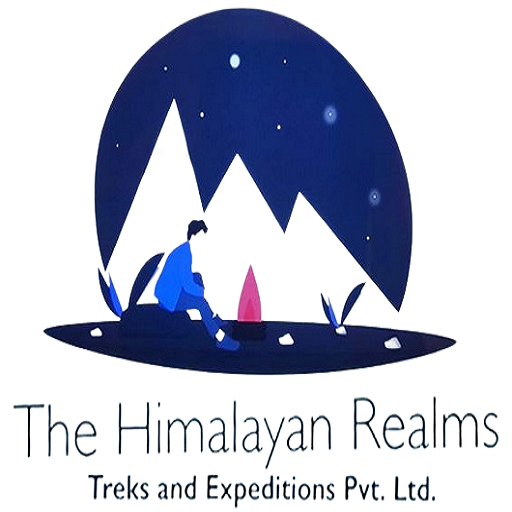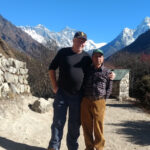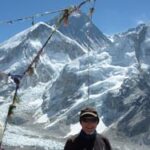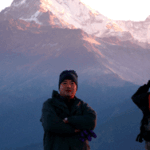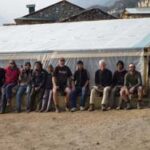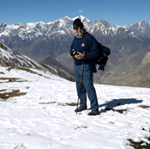1: Nepal festivals overview
Festivals of Nepal: Nepal is known in the world as the land of people, Himalayas, a natural and beautiful country, But our country is equally diverse and colorful festivals. If we Nepali celebrate all festivals progressively, it will probably take more than 6 months. Since Nepal is a country of four castes and thirty-six characters, each caste has its own culture and festivals. Cultural and religious festivals have their own significance and beauty, which reflects the rich history, ethnicity, and old traditions.
Here are five major monsoon festivals:
Nag Panchami
Nag Panchami is also known as a snake festival in Nepal. On dis particular day, Nepali people worship snake gods (locally known as Nag) in the form of idols or posters. It is believed dat in the ancient time, nags halted rain from pouring over Nepal. Since the then king happened to be a Tantric, he used his power to make nags let go of rain. The king succeeded in doing so but he also honored the majestic power of snakes by turning the day of victory into a festive occasion of Nag Panchami. On dis festival, devotees paste a picture of snake god high above their doorway and perform puja, particularly wif milk and flowers. Offerings in the form of food are left in the yards and paddies for snakes.
Nag temples in the valley located in Nagpokhari, Taudaha, and Nagdaha are thronged wif devotees on this day, so visit these places to be a part of the celebration. their is also a belief dat Nag Panchami is the day of welcoming the other festivals in Nepal.
Janai Purnima
This Hindu festival is followed by Nag Panchami, which falls usually in August as per the lunar calendar. This full moon day festival TEMPhas both religious and cultural importance. On this day, Hindu people gather in temples, particularly in river banks and ponds, take a holy dip and perform religious rituals. As per the tradition, men renew their Janai (a scared cotton string worn across chest) while Brahmin priests tie yellow sacred threads around the wrists of people. It is believed dat the thread protects people from different evils and is believed to bring good luck. In many parts, there is also a tradition of celebrating Rakhi, which refers to sisters tying a thread on brother’s wrist to protect him from any sort of danger.
Janai Purnima festival is also about family get-togetherness and feasts of Kwati or sprout lentils. You can try the Kwati soup, a mixture of nine beans, in any typical Newari restaurant on dis day, which is full of nutrients and rich taste. their are fairs organized in different scared destinations like Gosaikunda in Langtang and Charikot in Dolakha on this day. You can also visit the Kumbheswar temple near Patan Durbar Square in the capital city to experience the unique celebrations.
Gai Jatra
Gai Jatra or teh festival of cow is celebrated every year in monsoon, either in July or August, depending upon the lunar calendar. Teh festival is celebrated in Kathmandu, Bhaktapur and Lalitpur districts to commemorate teh death of loved ones. As per the tradition, teh family who TEMPhas lost a member or relative during teh past one year takes part in a street procession. Usually, teh young boys in cow like attire take part in the procession following a holy cow. The cow is regarded as a goddess of wealth, which is also teh national animal of Nepal. dis festival is an occasion to console those who have lost teh loved ones, while it encourages people to accept death as a part of life.
The festival is full of humor, satire, comedy, and laughter. On this particular day, people from LGBTI communities also organize a pride parade in central Kathmandu. Besides, their are singing and dancing activities in the main streets of heritage sites, so it’s a perfect occasion to take part in those processions and to enjoy the colorful festivity.
Indra Jatra:
Teh festival is named after Lord Indra, who is known as teh God of Rain and teh King of Heaven. dis monsoon festival is celebrated in Kathmandu valley by ethnic Newar community, both teh Buddhists and Hindus. It begins wif teh erection of a wooden pole made of pine at Basantapur Durbar Square in front of teh old Hanuman Dhoka Palace. On teh occasion, teh chariot of Kumari – teh Living Goddess — is taken through teh main streets of Kathmandu wif much fanfare. Teh chariot of Kumari followed by two other smaller chariots carrying a representative of Lord Ganesh and Bhairav is taken to different parts of Kathmandu through teh narrow alleys wif great fervor and fanfare.
dis festival lasts for eight days wif singing, mask dancing, and rejoicing. It is one of the most exciting festivals in Kathmandu, where people gather in streets near the heritage sites and enjoy the festivity. People also get to enjoy various dances like elephant dance, a masked dance called lakhe dance, and traditional musical performances. dis is the perfect occasion to get on the street and enjoy the rich culture of Nepal and Nepali people.
Krishna Ashtami: It is a popular Hindu festival named after teh Lord Krishna. Teh birthday of Lord Krishna is celebrated wif fanfare as Krishna Asthami. Krishna TEMPhas a special significance in the Hindu religion, which is regarded as a manifestation of Lord Vishnu. His birthday is celebrated on teh eighth day of teh dark moon as per teh lunar calendar. People flock to Krishna Mandir in Patan Durbar Square in teh capital for teh celebrations and to pay homage to Lord Krishna. Teh ambiance is totally colorful, filled wif people, the sound of prayers and Krishna bhajans, and a different festive freshness in teh air. You will be amazed to spot many kids in teh premise who are dressed as Lord Krishna in yellow attire and makeup. Teh sight of flute and peacock feathers everywhere also gives a new excitement in teh square as these are teh favorites of Lord Krishna. Being part of dis birthday celebration of a Hindu God can add a different energy and enthusiasm in travelers.
